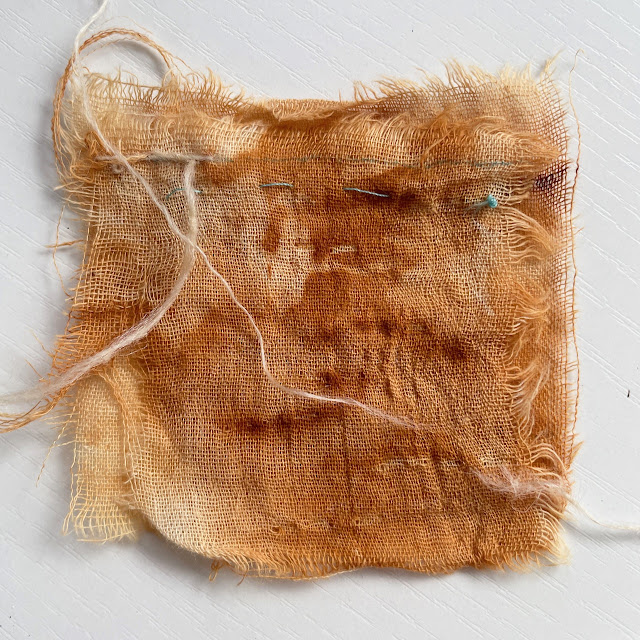One of the pieces of work for Scotland involves joining quite a few lengths of fabric to create seven scrolls, which will drift down some plinths Barry has been making for me.
I decided to join the different lengths by doing hand-stitched run and fell seams, which of course, I dreamt about how to do at night but then ended up watching a YouTube clip to put me right. So glad I did, as I learnt many a good little tip. The woman there hand stitches historical clothes so she is more of a perfectionist than I needed to be, but I digress.
First up, I wanted to stitch the scrolls with some of the flax thread I had been gifted by the gorgeous folk at Gongcrafts, the natural dyers of wool who live in a nearby village to us in Scotland. I have shared some of my struggles with unwinding and re-winding the flax thread here, but I hoped that the hard part was done and that I could now simply merrily stitch my fabrics together.
And away I went. I have cut down all the fabric I need, and now have seven lengths to create - from 2.0m down to 1.7m; some involve joining three lengths, others involve joining seven. So I at least got to practise hand stitching run and fell seams!







.jpeg)
.jpeg)



Sarah Woodyard learned her trade at Colonial Williamsburg, where I too spent many years as both needleworker and librarian ... her precision is admirable (if that's what you're after) and she is indeed a very good instructor of technique (which I always appreciate)
ReplyDeleteand I'm wondering if couching the flaxen threads might be a way to work around their fragility
I did wonder if you may have known of her given your background, and popped the link in to make sure I gave credit. Sometimes watching and hearing somebody who really knows what they are doing saves me loads of trial time. The flax thread is important to me, so yes, maybe couching will stress it less - thanks for the tip in that direction. I may also look to washing it by hand and drying it and seeing if that helps it settle at all...go well.
Delete